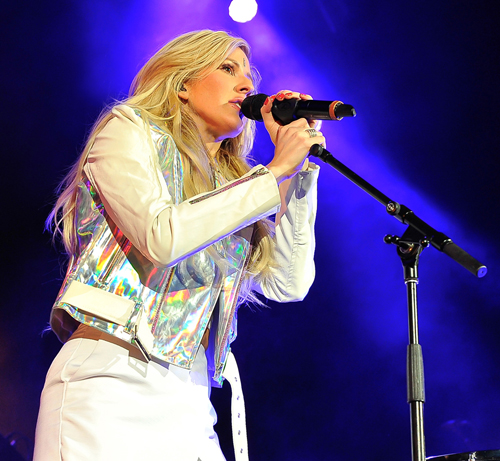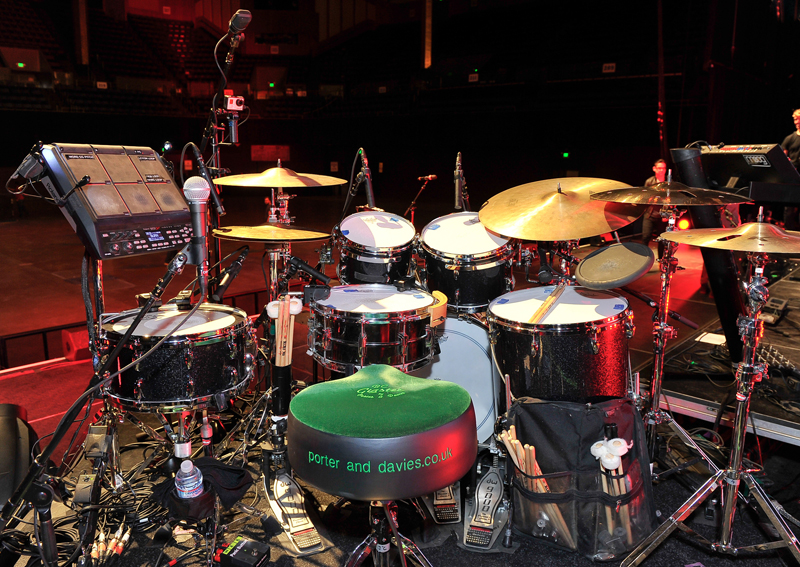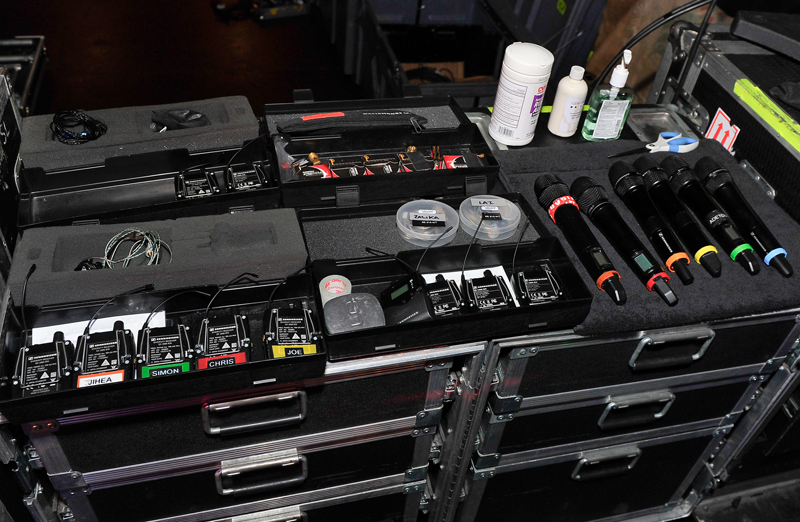
Flat & Honest
The C6 plug-in is additionally Harling’s main tool for taming ” a loud little bit” in Goulding’s voice occurring at around 1K. Beyond that, he admits that there isn’t really much processing going on for lead vocals beyond some judicious use of EQ and compression, a Waves doubler to thicken things up, a short mono room reverb, and a longer stereo reverb at times.
Goulding’s mic sports a DPA d:facto II capsule, which, according to Harling, is “very flat and honest, and is pretty stable in terms of gain-before-feedback. We’re very careful to ring-out the mic in the PA each day from the stage, partly using the Lake LM 44 for any super-tight notches required, and partly using a graphic inserted over Ellie’s vocal group.
“Once that’s out of the way,” he adds, “it’s just about finding space in the mix, just like any other gig. I use the C6 over the band group too, one of its dynamic EQ bands processes Ellie’s vocals as a side chain. This dynamic EQ band is set pretty wide from about 700 Hz on up to maybe 4K, and just gently dips the level of the band in the vocal region when she sings.”
Other processing elements at Harling’s disposal include a Midas XL42 preamp equalizer that spreads its inimitable and classic Midas sound over kick and snare drum, a SansAmp RBI that adds harmonics to synth bass, a Radial Phazer used to “line up” the kick drum mics, and an inexpensive Roland space echo pedal, which everyone seems to have latched onto these days for enhancing the emotional content in vocals.
Fairly Straightforward
The band continues to include MD and drummer Joe Clegg, Jihea Oh on keys and synth, Chris Ketley on guitar and keys, and Simon Francis on bass. With everyone using Sennheiser SR2050 IEM systems with EK2000 bodypacks, JH Audio JH16 custom-molded earphones were chosen for all as well.
“For me at the monitor end,” Neale relates, “I keep things fairly straightforward without many plug-ins. The vocal chains are no-nonsense, in-and-out with just a little EQ and compression, and I also use a parallel compression technique on the vocals to keep them up in the mix the whole time.
“Onboard compression and EQ are used on the vocal chains to keep latency as low as possible,” he continues. “Latency in IEMs can sound strange, almost like a doubling effect. For the musicians, that can be very off-putting.”
Everyone on stage gets a fairly full mix, with each individual musician’s vocal and/or instrument sitting on the top. Joe Clegg began using a seat thumper earlier this year, a move that has made Neale’s job a little trickier, in that he has greater difficulty when it comes to accurately judging the amounts of low-end energy arriving up on the drum riser.
“I obviously have none of that in monitor world, so I try to sit in his position each day and play the kit to remind myself of how it feels for him,” Neale says, describing his seat-of-the-pants solution to the problem. “Ellie presents the biggest challenges, however, as the dynamic range of her vocal is so vast, yet she wants to hear the quiet bits as loudly and clearly as the louder ones. Everything she sings has to be right up there in the mix, but also sound dynamic.
“To compound matters, we get a lot of ambient spill arriving at her mic. The parallel compression technique I mentioned helps here, but it’s not a solve-all. It’s always a balancing act from night-to-night.”
Achieving Consistency
Back out front, Harling chooses the C6 once again to control the aggressive tendencies of the synths. “Sounds that are impressive at studio volumes often wind up just being harsh in live environments,” he says. “There are definitely moments in this show where we can experience that. Compression can even things out, and as a mixer, you can’t overlook a few fader rides either.
As with Neale on monitors, Harling strives to make the house sound as real as possible. “Each song is so different,” he says, illustrating the raw essence of all the challenges he faces each night. “And so dense, with layered keys, backing tracks that are limited into distortion, and heavy bass that it’s not really possible to achieve consistency over the duration of any gig. You just have to treat it as a journey.
“Then the individual elements will naturally find their place and come to the forefront as needed. I don’t use much mix-bus compression or limiting. There’s enough of that in the source sounds themselves. Getting the vocal loud enough is the most important thing I have to achieve. Once I get that happening, everything else is a bonus.”
Gregory A. DeTogne is a writer and editor who has served the pro audio industry for the past 30 years.



